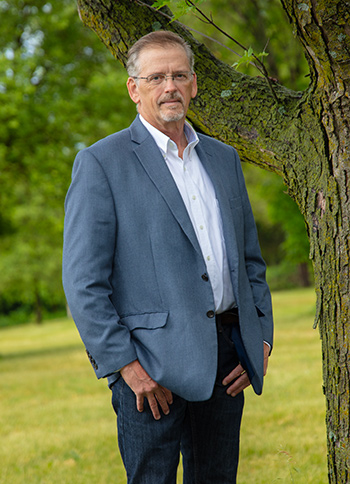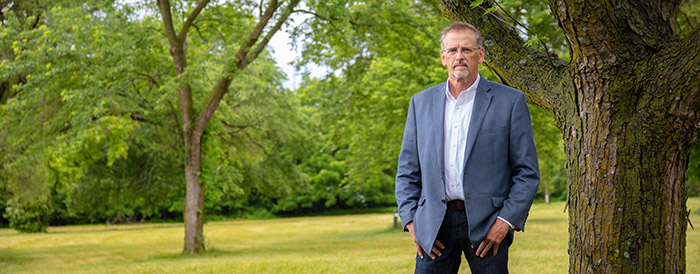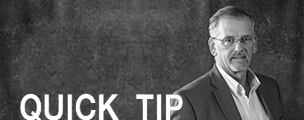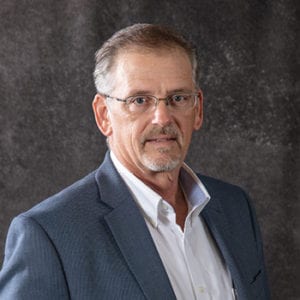Building client relationships through strong service
Building client relationships through strong service

Steve Rosauer, CFP • Washburn, IA
Rosauer Financial • Voya Financial Advisors, Inc.
Read full biography below
Proactive Advisor Magazine: Steve, talk about how your career in financial services has taken shape.
I grew up in a small-town atmosphere in Iowa, and we were a typical middle-class family. My dad was in construction his entire career. My mother was a homemaker and, with 11 kids in the family, had her hands full most of the time. I learned the value of hard work early on, and we all pitched in to help each other. I always had several part-time and summer jobs growing up to earn a little extra money.
I worked with my father for a couple of years in the construction field but was offered a part-time opportunity selling life insurance. That ultimately turned into a full-time position. From there, I went through the transition that was typical of advisors in the industry at the time, expanding out from life insurance into the areas of health-care insurance, Medicare supplement products, annuities, and mutual funds.
I studied to become a Certified Financial Planner in 1994, and that had a significant impact on how I viewed my role with clients. Since then, I have taken more of a holistic approach to helping people plan for their financial futures. That has become even more important in the last five years, as many of my clients are contemplating or are already in retirement.
My clients come from a wide range of occupations and backgrounds, and most have worked very hard throughout their lives to build up a nest egg. They are concerned with making their assets last throughout retirement and having a comfortable lifestyle. My goal is to help educate them and alleviate some of their concerns over what they see as the complexities of setting up a retirement-income plan.
Describe your financial-planning process.
 My planning philosophy is centered on serving the client. How can we work together to dig deeply into their financial and personal situation and find solutions that will lead to a higher probability of success?
My planning philosophy is centered on serving the client. How can we work together to dig deeply into their financial and personal situation and find solutions that will lead to a higher probability of success?
I subscribe to the planning methodology I learned in the process of becoming a Certified Financial Planner. This encompasses several steps: (1) learning about the client, sharing my perspective, and defining how we might work together; (2) data-gathering and discovery; (3) analysis of a client’s current financial situation, assets and liabilities, investments, and future income streams; (4) seeking agreement on goals and objectives and building a financial plan; (5) presenting specific recommendations and examining alternative scenarios; (6) implementing the plan and investment strategy; (7) monitoring progress toward objectives and having regularly scheduled review sessions.
I am low-key by nature, and I think that carries through to the way I work with clients. We spend a lot of time on the first two steps of getting to know each other and financial discovery. I try to create as relaxed an atmosphere as possible in our early meetings and do not pressure clients into any preconceived way to approach their financial plan. I want to make it as customized to their situation as I can.
What tools do you use in developing financial and investment plans?
There are several tools I use extensively in the process. One is a risk-assessment methodology that has many benefits for clients. It allows me to capture a quantitative measurement of the client’s risk tolerance, which helps inform the development of an investment plan that is compatible with their attitudes and capacity around risk. We can also use this methodology to examine their current investment holdings and assess where they stand in terms of overall risk exposure versus their own risk tolerance. Often, this is a real eye-opener for clients, as they frequently see that they have been taking on far more risk than they thought they were. This methodology also allows us to examine hypothetical portfolios we might be considering to get a reading on risk exposure. Overall, this becomes a very interactive and educational process for clients.
The second important tool is our robust financial-planning software. This software allows for extensive data-gathering and aggregation from many different sources. I can work directly with clients to examine and prioritize their goals, which this system characterizes as needs, wants, and wishes. We can look at a variety of scenarios where the priorities can be reordered or modified. The methodology also allows me to identify potential gaps in their retirement-income planning and look at retirement cash-flow planning and different types of insurance needs. We can examine portfolio analytics, and it has a feature to stress test different portfolio mixes. Another very helpful feature can examine various estate-planning strategies. The bottom line is that this planning software allows me to work closely with clients to build goals-based financial plans, analyze the probabilities for achieving those goals, and monitor progress toward achieving objectives through future years.
What is the role of third-party investment managers in your process?
As I work with clients on analyzing their risk tolerance, building their financial plan, and determining portfolio allocations, I am quite concerned with helping clients manage risk as much as possible. How can we attempt to achieve the client’s goals and retirement-income needs while taking the least amount of risk possible?
One might think that clients would have a better chance of achieving their goals in a lengthy retirement by aiming for the highest investment returns that they can. After considerable analysis of this issue, not to mention real-life lessons from periods like the dot-com crash and 2008, I believe the exact opposite is true. People have a lower rate of success for their plan, generally speaking, when they assume too much risk. This is due to the challenging mathematics of trying to have a portfolio recover from steep market losses, as well as the sequence-of-returns issue for retirees.

What are some solutions to solve for this? There is no one single answer—we must examine each individual situation and develop what we believe will be appropriate recommendations. For some clients, this might be a heavier weighting to guaranteed-income products. In general, it means having a strong level of diversification for client portfolios and, I believe, some use of tactical investment strategies that have an objective of managing risk.
I work with one third-party investment-management firm in particular that has a wide array of actively managed strategies. Their strategies use different asset classes and have many different types of management styles. The commonality of all of these strategies is that they are rules-based, depending on market indicators or signals to dial up or down their exposure to risk.
I work with this firm to examine various portfolio scenarios for specific clients and, through actual or backtested results, see how they performed in various market environments. I have found that the benefit for clients of this type of tactical approach is that very competitive returns can be achieved over the long term while significantly reducing the overall risk exposure of a portfolio. There are no guarantees, of course, but, as with the entire financial plan, I am looking to enhance the probabilities of success while attempting to manage risk.
I will use various blended tactical strategies in portfolios that can use things such as government bonds, high-yield bonds, U.S. large caps, sector-rotation equity strategies, or a number of other asset classes. Client portfolios, therefore, can utilize what people think of as traditional investment vehicles, but with the benefit of having them be actively managed. This can, in my opinion, make a significant difference in times of market stress, where drawdowns can be mitigated. As I have review sessions with clients, we can periodically examine the risk exposure of their specific portfolio and make strategy adjustments or rebalance if the analysis indicates the portfolio can be better aligned with their risk profile.
“People have a lower rate of success for their plan, generally speaking, when they assume too much risk.”
How do you develop new prospective clients?
I don’t actively market my firm, other than trying to see as many new prospects as possible that I am either referred to or have met in the community.
My best marketing tool is really our holistic financial-planning process itself. I will invite people to meet, with no obligation, to review their current portfolio and outline how our firm’s process works. My strongest advocates are my current clients. Once they have worked through the planning process, they are very willing to provide an introduction to a friend or associate. They see a lot of value in what we do. Our risk-assessment methodology is usually unlike any other system they have seen, and I have been told how impressive this process is. They want to share it with people they are close to, which makes obtaining referrals a much easier task.
One other important factor is my involvement with the community, through which I have met many different types of people through the years. I have served the community in several capacities, both in town and county civic organizations and by volunteering with the local ambulance and fire crews for many years. Not only have I enjoyed giving back to the community, but I also think it reinforces my overall commitment to service. That is usually meaningful to people, and I stress my service orientation to both current and prospective clients.

Holistic financial-planning process promotes firm’s growth
Steve Rosauer of Rosauer Financial says that his firm’s emphasis on holistic financial planning has enabled his firm to continue to grow through organic referrals. He says he subscribes to the planning methodology he learned in the process of becoming a Certified Financial Planner. This encompasses several steps:
- Learning about the client, sharing the firm’s perspective, and defining the working relationship.
- Data-gathering and discovery.
- Analysis of a client’s current financial situation, assets and liabilities, investments, and future income streams.
- Seeking agreement on goals and objectives and building a financial plan.
- Presenting specific recommendations and examining alternative scenarios.
- Implementing the plan and investment strategy.
- Monitoring progress toward objectives and having regularly scheduled review sessions.
Recent Posts:
 Steve Rosauer, CFP, is the founder of Rosauer Financial, based in Washburn, Iowa. His firm provides a variety of financial services to individuals and families, including financial planning, investment management, and retirement planning. Mr. Rosauer has more than 30 years of experience in the financial industry.
Steve Rosauer, CFP, is the founder of Rosauer Financial, based in Washburn, Iowa. His firm provides a variety of financial services to individuals and families, including financial planning, investment management, and retirement planning. Mr. Rosauer has more than 30 years of experience in the financial industry.
A native of Iowa, Mr. Rosauer was one of 11 children growing up in a small town. He says he attended parochial schools; had a “great, supportive family;” and “was always working extra jobs” to earn money. After working with his father in the construction industry, he began his financial-services career selling life insurance. As his career progressed, he began to offer clients a wider range of financial products and services and financial planning. He founded his own firm in 1991 and became a Certified Financial Planner (CFP) in 1994. He became an investment advisor representative with ING Financial Partners, Inc., in 2013, which transitioned to Voya Financial Advisors, Inc., in 2014.
Mr. Rosauer has two grown sons. He has been a local township trustee and member of the county board of adjustments. He has also volunteered for more than 30 years on local fire department and ambulance crews and was an ambulance captain for four years. In his spare time, Mr. Rosauer enjoys fishing, gardening, woodworking, and riding his motorcycle.
Disclosure: Investment advisor representative and registered representative of, and securities and investment advisory services offered through, Voya Financial Advisors, Inc. (member SIPC). Rosauer Financial is not a subsidiary of nor controlled by Voya Financial Advisors.
Photography by Dan Philips

